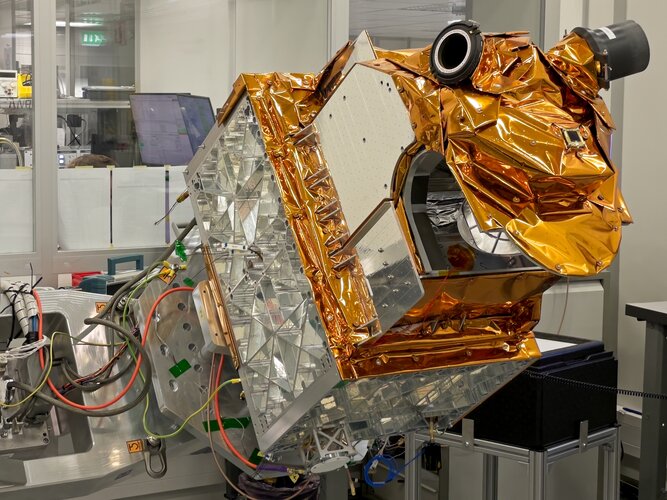
The EPS-Sterna mission is envisaged as a constellation of six microsatellites in three orbital planes to supply an almost constant stream of temperature and humidity data from every location on Earth.
This would, for the first time, allow for very short-range weather forecasting, or ‘nowcasting’, in the Arctic. The set of six microsatellites would be replenished three times.
While the Arctic is the focus, meteorologists will also use the constellation to improve weather forecasts globally.
Before this, however, the Arctic Weather Satellite prototype has to prove that it works.
Hence, embracing the New Space approach by proving new concepts in a cost-effective and timely manner, this new satellite has been developed and built on a very tight schedule.
It has taken just 36 months from ESA awarding the industrial prime contract to OHB in Sweden and the satellite being completed.
ESA’s Arctic Weather Satellite Project Manager, Ville Kangas, said, “We are right on schedule. The instrument, a microwave radiometer, was delivered by Omnisys the prime contractor for the instrument to OHB in October and integrated on the satellite platform.
“And now, thanks to the dedication of the companies involved, we have a complete satellite.”
The satellite is now equipped with a 19-channel cross-track scanning microwave radiometer, which benefits from the heritage of the Microwave Sounder developed for the MetOp Second Generation satellites.



